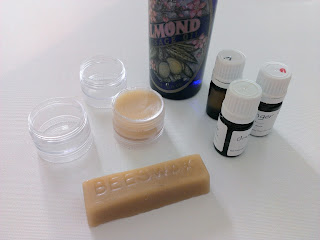The local hardware store had a piece of corrugated plastic that was approximately 20 x 24. It came packaged with a wire stake to use as a yard sign. No, no signs today. The only other materials I used were a sturdy ruler (clear acrylic works great) and an xacto knife.
I decided I wanted a mold that was 14" in length on the inside, 3 1/2" in width, and 3" high. With this size of material I could make two molds, and have a long piece left for other uses. First I added 3 inches on each side of the 14" of lenght I wanted. That took me to 20" and so I cut it on the longer side. This takes a bit of pressure with the xacto knife. You may have to make one cut first, and then go over it again. It's pretty sturdy stuff.
This piece was a tad shy of the 20" it said it was, but it worked out fine. Adding 3 1/2" aross the bottom, plus 3" for each side is 9 1/2". Since this piece is closer to 19 inches aross, cutting it in half worked out perfectly.
Next I measured three inches from each edge, and scored JUST ONE SIDE. It's easy to cut through just one side, but don't get too heavy handed or you'll have to start over with a new piece of material. Here's where I had the long sides scored and then I creased them.
After scoring the short sides, you will have a scored square in each corner. You can cut through one side of each square to make flaps. Which side you cut determines where your flaps will fold over, either the ends or the sides. You CAN cut the squares completely out, I did for my first mold. But you might have a little leakage with your soap, so I'm trying the flaps.
Once it's cut, you fold up the sides. You don't want to permanantly secure them though. Once you make your soap, you will pull the sides down to get it out of the mold.
In order to use the mold you can secure the sides with a heavy duty tape. If the weight of the soap causes the center to bow, you can use a piece of tape across the center or brace it on either side.
That's it! Once your soap has set up, slowly unmold each side. Once the soap is removed, you can scrape the remaining soap off, rinse, and reuse. Enjoy your soaping!


















